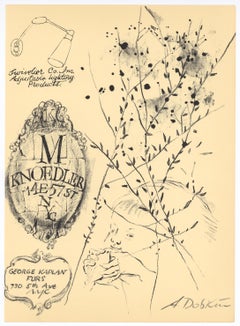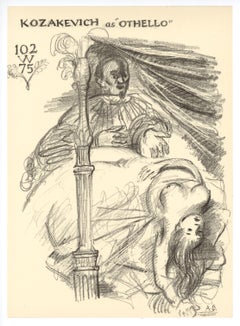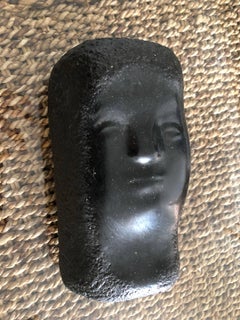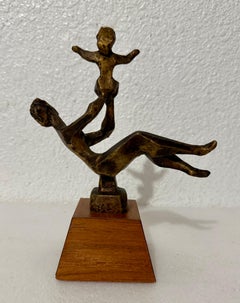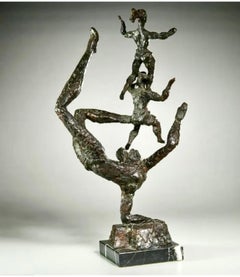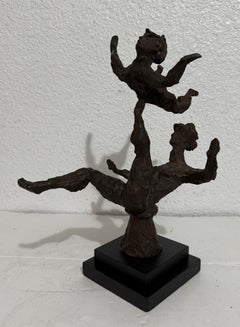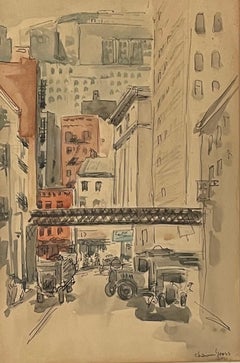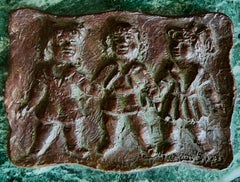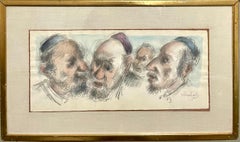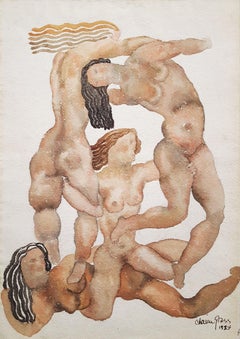Alexander Dobkin
1950s Prints and Multiples
Lithograph
1950s Prints and Multiples
Lithograph
20th Century American Modern Figurative Sculptures
Marble
Mid-20th Century American Modern Figurative Sculptures
Bronze
Mid-20th Century American Modern Figurative Sculptures
Marble, Bronze
1960s American Modern Figurative Sculptures
Bronze
Mid-20th Century American Modern Figurative Drawings and Watercolors
Paper, Watercolor
Mid-20th Century American Modern Figurative Drawings and Watercolors
Paper, Watercolor
Mid-20th Century Modern More Art
Marble, Bronze
Mid-20th Century American Modern Figurative Drawings and Watercolors
Paper, Watercolor
Recent Sales
1920s Modern Nude Drawings and Watercolors
Watercolor, Pencil
1920s Modern Figurative Drawings and Watercolors
Watercolor, Pencil, Graphite
20th Century American Modern Figurative Sculptures
Marble
Mid-20th Century American Modern Figurative Drawings and Watercolors
Paper, Watercolor
Mid-20th Century American Modern Figurative Sculptures
Marble, Bronze
Mid-20th Century American Modern Figurative Drawings and Watercolors
Paper, Watercolor
Mid-20th Century American Modern Figurative Drawings and Watercolors
Paper, Watercolor
Mid-20th Century American Modern Figurative Prints
Lithograph
20th Century American Modern Figurative Sculptures
Watercolor, Archival Paper
1940s Modern Figurative Sculptures
Wood
People Also Browsed
2010s Danish Scandinavian Modern Desks and Writing Tables
Oak
Mid-20th Century Abstract Impressionist Abstract Drawings and Watercolors
Oil
Antique Early 1900s American Beaux Arts Figurative Sculptures
Bronze
21st Century and Contemporary English Modern Table Lamps
Slate, Gold Leaf
21st Century and Contemporary American Coffee and Cocktail Tables
Iron
2010s Portuguese Minimalist Night Stands
Burl, Poplar
2010s Austrian Jugendstil Table Lamps
Brass
2010s Danish Scandinavian Modern Dining Room Chairs
Mohair, Velvet, Oak
Vintage 1950s American Mid-Century Modern Table Lamps
Metal
2010s French Side Tables
Hardwood
Vintage 1930s French Club Chairs
Bouclé, Wood
2010s Brazilian Modern Decorative Bowls
Bronze
Vintage 1980s Art Deco Decorative Bowls
Wood
21st Century and Contemporary English Modern Table Lamps
Slate, Gold Leaf
1930s American Modern Landscape Drawings and Watercolors
Watercolor, Gouache
Doris Lee"Boats Amongst the Mangroves, " Watercolor & Gouache on Paper signed by Doris Lee, c. 1930s
2010s Unknown Modern Side Tables
Bronze
Alexander Dobkin For Sale on 1stDibs
How Much is a Alexander Dobkin?
Chaim Gross for sale on 1stDibs
Chaim Gross was one of the most important American sculptors of the 20th century. Along with other noted sculptors William Zorach and Jose de Creeft, Gross was primarily a practitioner of the direct carving method, and a majority of his work was carved from wood. Born in Ukraine in 1904, Gross studied at the art academy in Budapest under painter Béla Uitz, followed by art studies at the Kunstgewerbeschule in Vienna. He immigrated to the United States with two of his brothers in 1921 and continued his studies at the Beaux-Arts Institute of Design with Elie Nadelman and others, and the Art Students League with sculptor and direct carver Robert Laurent. He also attended the Educational Alliance Art School at the same time as Peter Blume, Adolph Gottlieb and Moses and Raphael Soyer. Thereafter, Gross began an illustrious career that included important public commissions via his work for the Works Progress Administration and solo and group shows at prestigious galleries and museums such as the Whitney and the Smithsonian. Gross was also recognized with a silver medal at the Exposition Universelle de 1937 in Paris and 1942 with a purchase prize at the Metropolitan Museum of Art’s Artists for Victory exhibition for his wood sculpture of famed circus performer Lillian Leitzel. Gross also had a long career as a professor of printmaking and sculpture at various institutions including the The New School for Social Research, Art Students League and New Art School (which Gross ran briefly with fellow artists Alexander Dobkin and Moses and Raphael Soyer). But he had his longest tenure of 50 years as a professor at his alma mater, the Educational Alliance Art School, where he taught Louise Nevelson in 1934 and helped guide her transition from painter to one of the most important female sculptors of her generation. Gross received multiple honorary doctorates in the 70s and 80s and his work can be found in major museums and private collections throughout the United States, with substantial holdings at the Hirshhorn Museum and Sculpture Garden in Washington DC. Gross died in 1991.
A Close Look at Modern Art
The first decades of the 20th century were a period of artistic upheaval, with modern art movements including Cubism, Surrealism, Futurism and Dadaism questioning centuries of traditional views of what art should be. Using abstraction, experimental forms and interdisciplinary techniques, painters, sculptors, photographers, printmakers and performance artists all pushed the boundaries of creative expression.
Major exhibitions, like the 1913 Armory Show in New York City — also known as the “International Exhibition of Modern Art,” in which works like the radically angular Nude Descending a Staircase by Marcel Duchamp caused a sensation — challenged the perspective of viewers and critics and heralded the arrival of modern art in the United States. But the movement’s revolutionary spirit took shape in the 19th century.
The Industrial Revolution, which ushered in new technology and cultural conditions across the world, transformed art from something mostly commissioned by the wealthy or the church to work that responded to personal experiences. The Impressionist style emerged in 1860s France with artists like Claude Monet, Paul Cézanne and Edgar Degas quickly painting works that captured moments of light and urban life. Around the same time in England, the Pre-Raphaelites, like Edward Burne-Jones and Dante Gabriel Rossetti, borrowed from late medieval and early Renaissance art to imbue their art with symbolism and modern ideas of beauty.
Emerging from this disruption of the artistic status quo, modern art went further in rejecting conventions and embracing innovation. The bold legacy of leading modern artists Georges Braque, Pablo Picasso, Frida Kahlo, Salvador Dalí, Henri Matisse, Joan Miró, Marc Chagall, Piet Mondrian and many others continues to inform visual culture today.
Find a collection of modern paintings, sculptures, prints and other fine art on 1stDibs.
